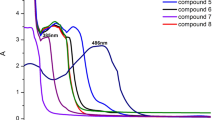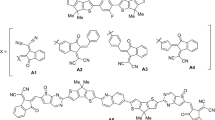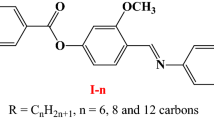Abstract
THE usual formula given to the nitro group is containing a co-ordinate link1, and it is sup-ported by the parachor evidence2. On account of this dissymmetry, both the compounds 1-4-dinitrobenzene and 1-3-5-trinitrobenzene should possess finite electric dipole moments. Also studies in benzene3 and in naphthalene4 have resulted in moments of 0·6 and 0·8 Debye units being ascribed to the di- and tri-substituted compounds respectively.
This is a preview of subscription content, access via your institution
Access options
Subscribe to this journal
Receive 51 print issues and online access
$199.00 per year
only $3.90 per issue
Buy this article
- Purchase on SpringerLink
- Instant access to full article PDF
Prices may be subject to local taxes which are calculated during checkout
Similar content being viewed by others
References
Sidgwick, “Electronic Theory of Valency”, p. 65.
Sugden, “The Parachor and Valency”, p. 118.
Parts, Z. Phys. Chem., 4 B 227 ; 1929. Tiganik, ibid., 13 B 425 ; 1931. Lutgert, ibid., 14 B 31 ; 1931.
Brieglieb and Kambeitz, Naturwiss., 105 ; 1934.
"Dielectric Constantand Molecular Structure".
D. L. Hammick, Hills, Howard, J. Chem. Soc., 1530 ; 1932.
Author information
Authors and Affiliations
Rights and permissions
About this article
Cite this article
JENKINS., H. Structure of the Nitro Group. Nature 134, 217 (1934). https://doi.org/10.1038/134217a0
Issue date:
DOI: https://doi.org/10.1038/134217a0
This article is cited by
-
Effect of solvent in dipole moment measurements: Polarisation and moment of nitrobenzene
Proceedings of the Indian Academy of Sciences - Section A (1935)



